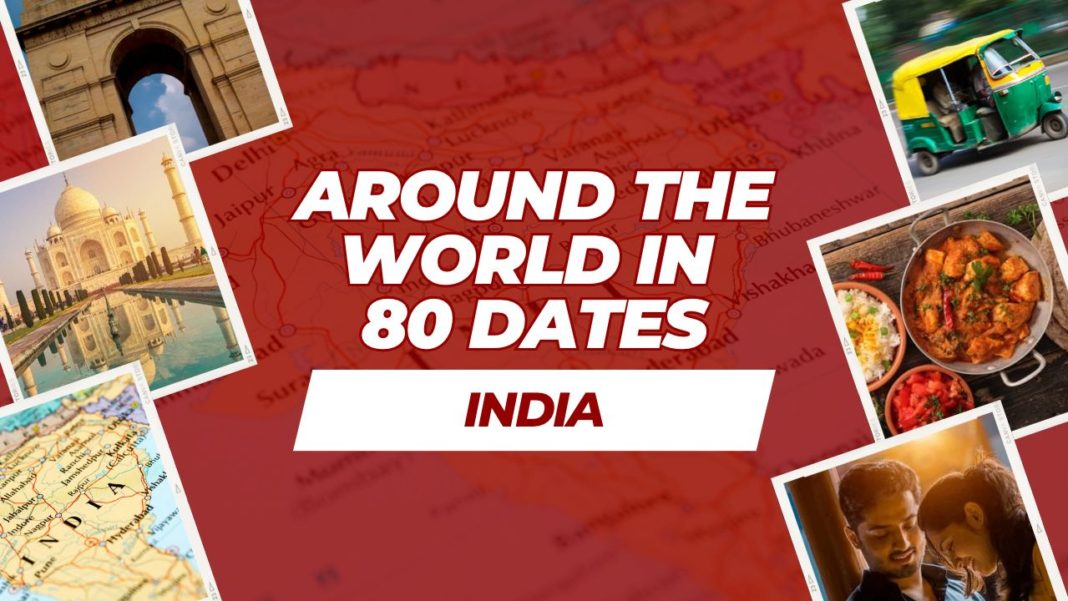India, with its kaleidoscope of regions, languages, and traditions, presents a cultural landscape as diverse as its people. This vast country, rooted deeply in history yet rapidly advancing into the modern age, offers a unique perspective on many aspects of life, including the intricacies of dating and relationships.
The dating culture in India is a fascinating interplay between age-old customs and the contemporary influences brought by globalisation and technology. Traditional practices such as arranged marriages still prevail in many parts of the country, where families play a significant role in choosing partners. However, alongside these practices, there’s a growing acceptance of more liberal dating approaches, particularly among the urban youth, who are increasingly influenced by global media and technology.
significant role in choosing partners. However, alongside these practices, there’s a growing acceptance of more liberal dating approaches, particularly among the urban youth, who are increasingly influenced by global media and technology.
This blend of old and new creates a dynamic dating environment where conventional matchmaking coexists with the freedoms of modern love, including online dating apps and social media platforms. These changes reflect not just a shift in how relationships are formed, but also a broader transformation in social attitudes towards love and marriage.
In this article, we explore the complexities of navigating the dating scene in India, examining how traditional values are being reinterpreted in the age of technology and global connectivity. By understanding both the historical roots and the modern trajectories of dating, readers can gain insights into the rich tapestry of love and relationships in contemporary India.
Historical Perspective on Dating in India
India’s approach to romance and marriage has been deeply influenced by its rich history and cultural diversity. Traditional dating customs, heavily rooted in family and religious values, continue to shape contemporary dating practices across the nation.
Traditional Indian Dating Customs
Arranged Marriages: Historically, most marriages in India were arranged by family members, a practice that remains common today. This process involves families choosing prospective spouses for their children based on factors such as caste, religious affiliation, social status, and astrology. It reflects the belief that marriage is not just a union between two individuals but between two families.
Role of Astrology in Matchmaking: Astrology plays a crucial role in the traditional matchmaking process. Horoscopes, created based on the exact time and place of birth, are used to predict compatibility between potential partners. The alignment of stars and planets at birth is believed to influence one’s personality and destiny, thus, matching horoscopes can predict marital success and harmony.
Historical and Religious Influences
Cultural Norms: Indian culture historically views marriage as a sacred and necessary duty, a means of pursuing dharma (duty), artha (prosperity), and kama (physical desires). These values are deeply embedded in Hindu philosophy and are reflected in other religions present in India, shaping attitudes toward dating and marriage.
Religious Teachings: The influence of various religions—Hinduism, Islam, Sikhism, and Christianity—plays a significant part in shaping the dating practices in different communities. For example, in many Muslim communities, dating is often more conservative, with a focus on marriage, while Christian communities might have more liberal dating practices.
Community and Social Structures: The caste system, although less pronounced today in urban areas, still affects marital decisions in many parts of India. Marrying within one’s caste and religion often remains a significant expectation, which influences dating choices and practices.
These traditional practices and historical influences provide a backdrop against which the modern dating scene in India is evolving. While younger generations in urban settings may lean towards more liberal dating practices, many continue to respect and incorporate traditional customs into their romantic relationships, creating a unique blend of the old and the new. This interplay between tradition and modernity is crucial for understanding the complexities of dating and marriage in contemporary Indian society.
Modern Dating Scene in India
The contemporary dating landscape in India is a dynamic mix of traditional influences and the fast-paced infusion of technological advancements, with marked differences between urban and rural settings.
Urban vs. Rural Dating Landscapes
Urban Areas
In cities like Mumbai, Delhi, and Bangalore, the dating scene is notably more progressive and influenced by global trends. Urban singles often have greater freedom in their dating choices and are more likely to engage in dating practices such as casual dating, live-in relationships, and using online dating platforms. The cosmopolitan nature of these cities allows for a more open approach to dating, where individuals can form relationships without the immediate pressure of marriage.
Rural Areas
Contrasting sharply with urban centres, rural parts of India still adhere closely to traditional dating norms. In these areas, relationships are largely seen through the prism of eventual marriage, with less acceptance of casual dating. Family and community play a significant role in the matchmaking process, and arranged marriages are more prevalent.
Impact of Technology on Dating
The advent of technology has dramatically transformed the dating scene across India. Online dating apps such as Tinder, Bumble, and homegrown platforms like TrulyMadly and Aisle have gained popularity, especially among the urban youth. These apps offer a platform for young Indians to explore dating opportunities outside the traditional confines of their social and family networks.
- Tinder and Bumble provide a more global approach to dating, facilitating casual and sometimes short-term relationships.
- TrulyMadly and Aisle cater more to the Indian context, incorporating features that take into account cultural nuances like community and intention towards marriage.
Shifting Attitudes Towards Dating and Relationships
There is a noticeable shift in the youth’s attitudes toward dating and relationships in India. While traditional values still hold sway, many young Indians are adopting more liberal views on dating. This shift is partly driven by exposure to global media, education, and the anonymity provided by technology, which allows for greater exploration of personal relationships without immediate societal scrutiny.
Balancing Tradition and Modernity: Many young Indians find themselves balancing the desire for independence in dating with familial expectations. It’s not uncommon for young couples to maintain traditional customs, like seeking parental approval, while still enjoying the freedoms that modern dating offers.
Cultural Expectations: Despite progressive trends, many aspects of traditional Indian culture still influence dating, such as the expectation to eventually marry or the stigma associated with premarital relationships, particularly visible in more conservative or rural areas.
The modern dating scene in India thus presents a fascinating study in contrasts, where the past and the present merge, creating a unique cultural phenomenon that continues to evolve rapidly in the face of ongoing social and technological changes.
Cultural Nuances in Indian Dating
Navigating the dating scene in India involves understanding a variety of deeply ingrained cultural nuances that influence personal relationships. These include the critical role of family approval, societal norms regarding public behavior, and shifting attitudes towards interfaith and intercaste relationships.
Importance of Family Approval and ‘Arranged Love’
Family approval remains a pivotal element in Indian dating culture. The concept of ‘arranged love’—where families arrange a match that later blossoms into love—illustrates how traditional matchmaking and modern romantic love can coexist. In such scenarios, families initially approve the match based on compatible backgrounds, values, and horoscopes, but the couple is then given time to date and develop a romantic relationship before proceeding to marriage. This approach tries to merge respect for family expectations with the individuals’ choice, reflecting a compromise between old customs and new ideals.
Societal Norms Around Public Displays of Affection and Gender Roles
Public Displays of Affection (PDA)
Generally, Indian society is conservative about public displays of affection. Holding hands may be tolerated in urban areas, but more overt displays like kissing can attract disapproval or legal attention, especially in less liberal or rural areas. The acceptability of PDA often hinges on the locality and the prevailing cultural attitudes of the region.
Gender Roles
Traditional gender roles still predominate in many parts of India, influencing how individuals are expected to interact within dating relationships. Men are often expected to take the initiative in dating and financial aspects of a relationship, while women may find themselves under more scrutiny regarding their dating choices and behavior. However, these roles are gradually evolving, especially in urban environments where women are increasingly prioritising careers and personal independence.
Evolving Views on Interfaith and Intercaste Relationships
The traditional boundaries that discouraged interfaith and intercaste relationships are slowly changing. Especially among India’s urban youth, there’s a growing acceptance of dating and marrying outside one’s caste or religion. This shift is partly fueled by increased secular education, greater social mobility, and the influence of media portraying diverse relationships. Nonetheless, such relationships can still face significant challenges, including familial opposition and societal judgment, indicating that while progress has been made, the path to widespread acceptance is still fraught with obstacles.
Understanding these cultural nuances is crucial for anyone navigating the Indian dating scene. It requires a delicate balance of respecting traditional values while embracing the evolving attitudes that accompany India’s rapid socio-economic changes.
Tips for Navigating the Indian Dating Scene
For foreigners and newcomers, dating in India can be a fascinating yet complex adventure, requiring an understanding of the local cultural landscape. Here are some practical tips to help navigate the Indian dating scene with respect and sensitivity.
Practical Tips for Foreigners Dating in India
Educate Yourself About Cultural Norms
Learning about the local customs, traditions, and social etiquette is crucial. This includes understanding the roles of family in relationships, the importance of religion and caste, as well as general societal expectations regarding dating.
Be Respectful of Local Sensitivities
India is a culturally diverse country with varying degrees of conservatism. What may be acceptable in metropolitan areas like Mumbai or Bangalore might not be suitable in more rural or conservative parts. Respect local sensibilities, especially regarding public displays of affection and interactions between unmarried couples.
Adapting to Local Dating Customs
Understand the Importance of Festivals and Family Gatherings: Festivals and family gatherings play a significant role in Indian culture. Participating in these can be a gateway to better understanding your partner’s cultural background and to showing respect for their traditions. It also provides a valuable opportunity to bond with potential family members and friends.
Navigating Religious and Cultural Festivals
Being aware of and participating in significant cultural and religious festivals can enhance mutual understanding and respect in your relationship. Whether it’s Diwali, Eid, Christmas, or any regional festival, showing interest and participation can greatly endear you to your partner and their family.
Using Dating Apps Effectively
Select the Right Platform
Choose a dating app that aligns with your relationship goals. Apps like Tinder and Bumble are popular among the urban youth for more casual relationships, while platforms like Shaadi and Jeevansathi are geared towards those looking for marriage and long-term commitments.
Creating an Effective Profile
When using dating apps, create a profile that honestly reflects who you are and clearly states what you are looking for. Be respectful and keep cultural sensitivities in mind when interacting with matches.
Understanding Local Communication Styles
Communication in India can sometimes be indirect, and it’s important to read between the lines. While English is widely spoken, incorporating some local phrases and expressions can help bridge the cultural divide.
Safety and Precautions
Always prioritise safety when meeting someone new, especially if you are unfamiliar with the local environment. Meet in public places and inform someone about your whereabouts.
Case Studies
To enhance the understanding of the dynamics discussed in the article about the Indian dating scene, here are a few real-life examples and case studies that illustrate the blend of traditional and modern practices in India.
Case Study 1: Shaadi.com and Its Role in Modern Matchmaking
Shaadi.com is one of India’s largest and most successful matrimonial websites, which has modernized the traditional arranged marriage process. Founded in 1996, the platform uses technology to allow individuals and families to find suitable matches based on detailed criteria, replicating the traditional matchmaking process in a digital format. This example illustrates how traditional matchmaking principles can be adapted to fit modern needs, allowing users to have more control over their choices while still respecting family values and community norms.
Case Study 2: Jeevansathi’s Regional Campaigns
Jeevansathi.com, another major matrimonial service in India, conducts regional campaigns that cater to the specific cultural and traditional nuances of different parts of India. For instance, their targeted approach in states like Rajasthan and Gujarat, where community-specific traits are highly valued in the matchmaking process, showcases the adaptation of online platforms to regional cultural specifics. This reflects an understanding of the importance of caste, religion, and even regional preferences in Indian marriages.
Case Study 3: Bumble’s Women-First Feature in India
When Bumble, a global dating app, was launched in India, it was customised to include features addressing safety and privacy concerns, especially for women. Recognising the cultural sensitivities and the challenges women face in the Indian dating environment, Bumble enabled women to be the only ones who could initiate conversations after a match. This adaptation shows the blend of respecting local cultural nuances while promoting modern dating practices that empower women.
Case Study 4: Interfaith Marriages and Legal Framework
Interfaith marriages in India, although still rare, are facilitated by the Special Marriage Act, 1954, which allows citizens to marry regardless of their religion without religious ceremonies. Real-life examples of interfaith couples, like Bollywood celebrities Shah Rukh Khan and Gauri Chibber, who have navigated societal pressures and family expectations, serve as prominent examples of how traditional barriers are being challenged in modern India.
These case studies not only highlight the complexities and nuances of the Indian dating scene but also demonstrate the ongoing evolution towards a more inclusive and flexible approach to relationships and marriage in the country.
Conclusion
The dating scene in India is as rich and complex as the country’s myriad cultures, languages, and traditions. Navigating this landscape requires an understanding of both the deep-rooted customs that have shaped social interactions for centuries and the modern influences that are reshaping them today. From the traditional matchmaking processes still prevalent in many parts of the country to the burgeoning use of online dating platforms among the urban youth, the Indian dating scene offers a fascinating glimpse into a society that is at once ancient and contemporary.
For those looking to explore dating in India, it is crucial to approach with an open mind and a respectful attitude towards the cultural differences you will encounter. The diversity of religious, regional, and social customs means that what works in one context might not apply in another. Being adaptable, informed, and sensitive to these nuances will not only enhance your dating experience but also enrich your understanding of Indian culture as a whole.
Whether you are seeking a serious relationship or simply curious about making social connections, the Indian dating scene can offer unique insights into the values, expectations, and aspirations of its people. Embrace the adventure with a spirit of curiosity and respect, and you will find that dating in India is not just about finding a partner, but also about discovering new perspectives and growing personally and culturally.






